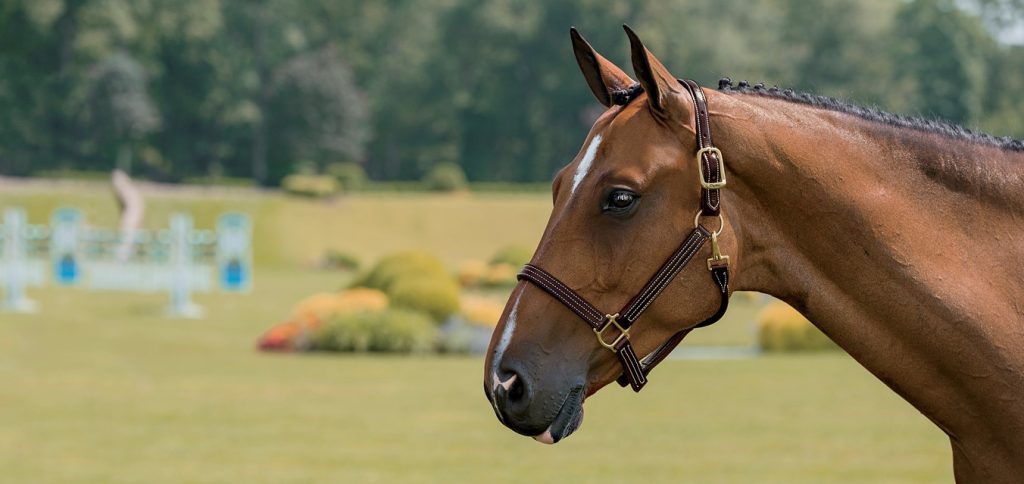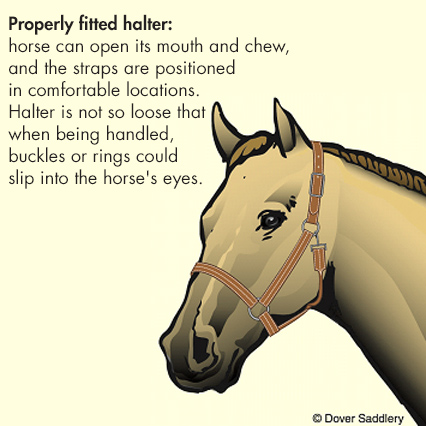
As we handle our horses each day, we might not notice a problem developing with the way our horses’ halters fit. Leather halters in particular stretch with use, cleaning and conditioning, but even web halters with breakaway leather crowns can loosen over time.
A periodic review of your horse’s halter fit is a wise step toward keeping your horse safe and comfortable. A loose halter can slide off accidentally or ensnare a hoof; a halter that is too tight can dig into skin or interfere with a horse’s breathing, chewing or swallowing.
Many manufacturers offer halters. If you follow our fitting guidelines but cannot achieve a satisfactory fit on your horse, try a halter from a different manufacturer. A horse that is difficult to fit is best suited for a halter with a double-buckle crown and an adjustable chin.
Here’s how we like to ensure a proper halter fit:
1. Adjust the crownpiece, which will impact the placement of the noseband, the looseness of the throatlatch and the angle of the cheek pieces against your horse’s face. The crownpiece should fit over the poll, close to the back of your horse’s ears, but not press into them. Some halters have buckles on both sides of the crownpiece, and some have only one buckle on the left side. In the case of two buckles, try to use symmetrical holes for the crownpiece setting.
2. Check the noseband of the halter. It should sit about halfway between your horse’s eyes and nostrils, resting under the cheekbones so that the metal hardware joining the nose piece, chin strap and cheek piece does not press into the bones.
Adjust the noseband snugly using two to three fingers’ width between it and your horse’s face as a guideline. Some nosebands do not have buckles for adjustment. If this is the case with your halter, take extra care to be sure that you can obtain the optimum position of the noseband by raising or lowering the crownpiece with buckle, and that the noseband isn’t too loose or too tight.
If the cheek pieces are too long or the crownpiece is adjusted too loosely, the noseband will sit too low on your horse’s muzzle. In this case, it may impair your horse’s breathing or in extreme cases, slip over your horse’s nose.
3. Check the throatlatch, which should rest under your horse’s head where the neck meets the jowls. You should be able to fit three to four fingers into the throatlatch area to be sure your horse can breathe and swallow, but this spacing will not enable your horse to get a foot caught in that strap if he lowers his head.
4. Check the cheek pieces. Ideally, they should sit parallel to the cheek bones. If the throatlatch is too short or too long, or the crownpiece is not adjusted correctly, then the cheek pieces will not be able to run parallel to the cheek bones.
To browse our entire selection of halters, click here.
We want to see your #dovermodels in their halters, share your photos with us on Instagram and Facebook by tagging @doversaddlery!


